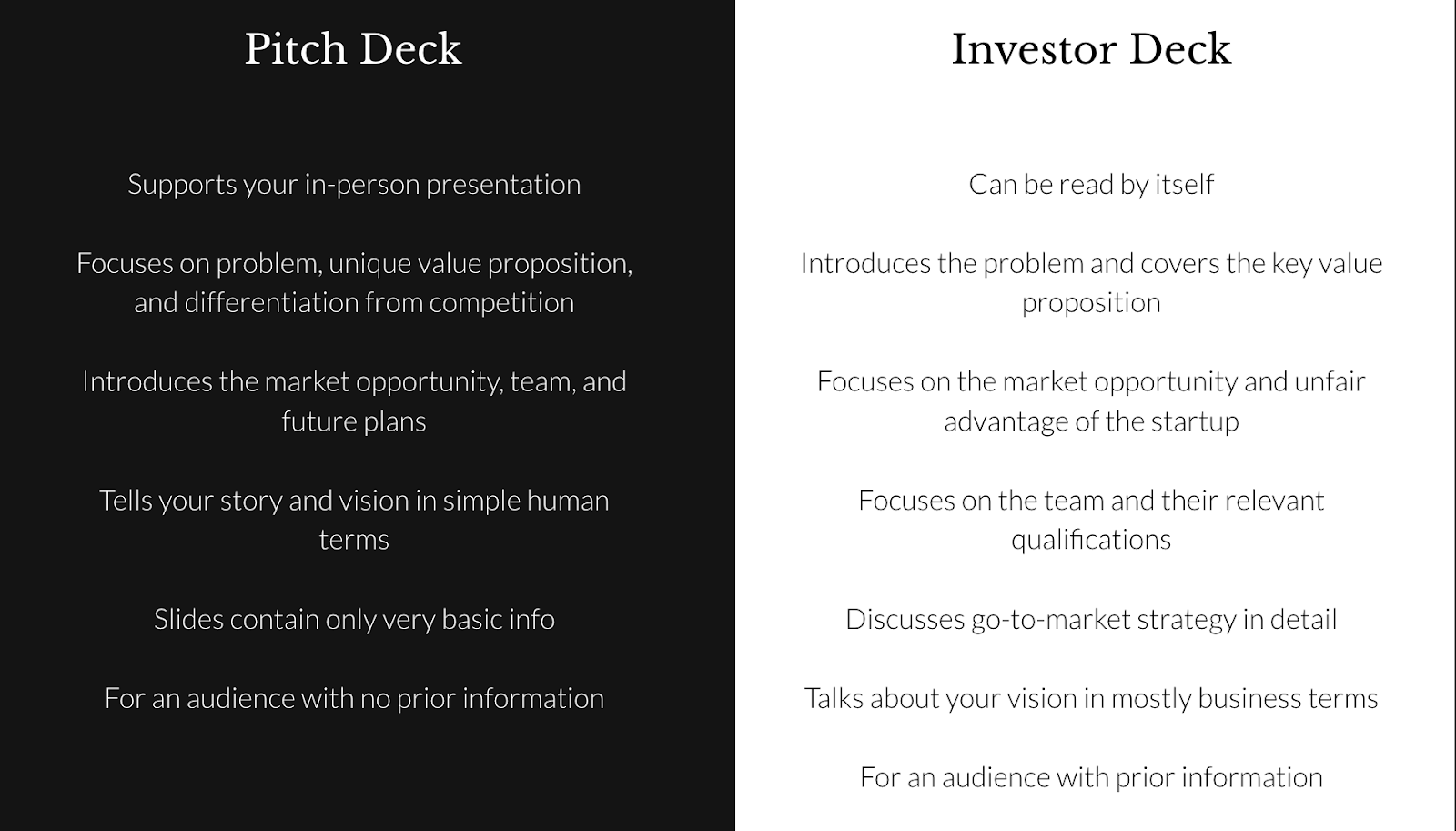
Does The Perfect Pitch Deck Structure Actually Exist?
Investment rounds fail for many reasons: unwanted products, poor business models, unproductive teams — and uncompelling pitch decks.
A carefully crafted pitch deck is key to getting people to invest in your idea — to invest in you. But you knew that already.
The question is, where do disruptive visionaries start when constructing a pitch deck? The home of factual solutions, credible contributors, and unlimited resources. That’s right. Google.
Maybe that’s how you got here? Tirelessly reading articles that proclaim to show ‘The best 20 pitch decks ever’, all of which include the same list of examples, providing the same ‘key takeaways’, claiming to have constructed the perfect pitch deck structure template, sharing exactly how many slides you need and exactly what to include on each.
To save you some time, here’s what they said the perfect structure was, in as few words as possible (64 to be precise).
1. Intro: Who are you?
2. Problem: What are you going to solve?
3. Solution: How are you going to solve it?
4. Target Market: Who wants it?
5. Competitors: Can anybody else solve it?
6. Product: Show how it works.
7. Market Validation: Any sales/leads?
8. Business Model: How does it make money?
9. Financials: What do you forecast?
10. Fundraising: How much do you want?
11. Team: Who are you working with?
Alas, the truth is not so prescriptive.
Story is more important than structure
“The person who follows the crowd will usually go no further than the crowd. The person who walks alone is likely to find himself in places no one has ever seen before.”
– Albert Einstein
Sure, the startups that pioneered this template have gone on to achieve great things, but it is not actually what got them the funding they needed.
Airbnb had 11 slides, Facebook had 22, Buzzfeed 15. The truth is, there is no perfect number of slides nor perfect structure.
What set them apart from the countless forgetful pitches investors sit through every week was their ability to answer five simple questions:
1. Who are you?
2. Why are you here?
3. What are you going to do about it?
4. Will it work?
5. What do you need?
These are the chapters you need to tell your story; the foundation of every awesome pitch. How you order it and deliver it, that’s up to you. Judgements, considerations and decisions are made, not just on your answers to these questions, but how you’ve answered them.
This is where the hard work (and fun) begins.
Personalise your story
“To see a World in a Grain of Sand
And a Heaven in a Wild Flower,
Hold Infinity in the palm of your hand
And Eternity in an hour.”
– William Blake
When talking to investors of any kind, it’s important to show the market size and impact your solution will give. That much is clear. What’s often missed is the tangible, contextual backbone that turns a pitch into a story they’ll care about.
People care about people. Tell me how your solution affects one person, give them a name and make me care about them, then tell me how many of them there are. We thought hard about this when preparing cybersecurity futurists Padlock for their winning pitch to MIT Future of Work.
They had a strict three minute time limit. Given these constraints, we went with a standard pitch structure — but used the framing device of a story to make the power of their solution real.
While their business is finding flexible work for skilled individuals in the cyber industry, we helped them focus their story on a single mother whose life they’d helped transform. She became the definition of the problem and, once we’d outlined their solution, the metaphor for what was possible.
The point is that big numbers melt into big numbers and become forgettable. While stories have the power to add empathy to abstraction — stories make numbers matter.
Know your audience
“Pitching to a room without knowing your audience is like sending a love letter addressed ‘To whom it may concern’.”
– Nancy Duarte
A pitch deck that is agile is a pitch deck that wins. Ensuring your slides are tailored to the audience and touching on the issues that resonate with them = much more impact. So take the time, research your audience, make it to fit their needs.
For instance, when developing the pitch deck for an insurance tech company, we decided to split the deck in three: one for the insurers, one for the investors, one for the end users. Each had drastically different needs to address and expectations to subvert, so giving them the same one would’ve meant answering none of them fully.
In an ideal world, you’d know everything about your audience, and rebuild your deck for each presentation to directly address their problems. What are they looking for? What are their red flags? What do they expect? What did they have for breakfast? What are their views on Brex… you get the jist. But realistically, there’s only so much time in the world, and only so much their Facebook/LinkedIn page will tell you. So your ability to read the room will also make a difference.
Your pitch deck is not your investment deck
Before writing out the deck, think, really think: What is the purpose of this? Is it a concept pitch, a plea for support, or a full investment proposition? These aren’t the same thing.
Many fail to recognise this and end up stuck in the middle. Pitch decks are not the same as investment decks. Investor decks are based around the business case — your team, your plan, your profitability.

They can be read on their own and are usually copy heavy. Using them to pitch to a room full of time-constrained investors? A recipe for failure and snoring.
A pitch deck, meanwhile, is a brief presentation that helps you share your story, vision and business overview to an audience that you hope will listen. It supports you as you speak to the room, as a visualisation of the picture you’re trying to paint.
More than anything else, a pitch deck is a springboard for your story and your passion — setting you up to sell the pertinence of the problem and the clarity of your solution.
Capture their imagination, not their money
“Ask for money and you’ll get advice, ask for advice and you’ll get money twice.”
– Someone
Don’t focus on money, focus on buy-in. Sell your story and the money will come. Obsession over raising a specific amount of money often leads to entrepreneurs overselling their vision and striking out, or worse, getting in bed with the wrong investors.
Having an investor believe in your mission, rather than solely your profitability, always makes for a better marriage. A great way to achieve this is to put them in the shoes of the people you’re helping.
Make it impossible to not take notice. Innovate around the problem, the ‘why are you here’ beat. When we were designing the pitch for Love Language, we didn’t tell the audience the problem, we showed it to them, bringing attention to the disconnection deaf people experience in the workplace by starting the pitch with a deaf person presenting in sign, with no interpreter.
Simple. Creative. Impactful.
People can’t ignore the problem if they can’t understand the pitch. After that, the rest was simple — how many people does this affect, what’s the financial implication, what’s our solution? Starting with an immersion exercise served to give lived experience to an abstract concept, introducing our presenters and why they were there in one fell swoop.
But above all else…
Be yourself, everyone else is already taken.
– Oscar Wilde
It may sound glib at this point, but it’s the most important thing. Investors buy into more than the product. They buy into the entrepreneur. So when you’re onstage, what you’re selling — more than anything — is yourself.
Whether you like it or not, being an entrepreneur means you’re a creator, an innovator, a leader. Your passion is what got you here, and people will always respond to it.
Sure, you need to hit certain beats, and following a structure may help, but innovating around it is usually better. Whatever you do, be you.
Do you need someone to help you tell your story?
We’re Outfly, a design innovation agency built for disruptive startups, innovators and game changers. We like helping people tell their story. Don’t be afraid to reach out: hello@outfly.io









